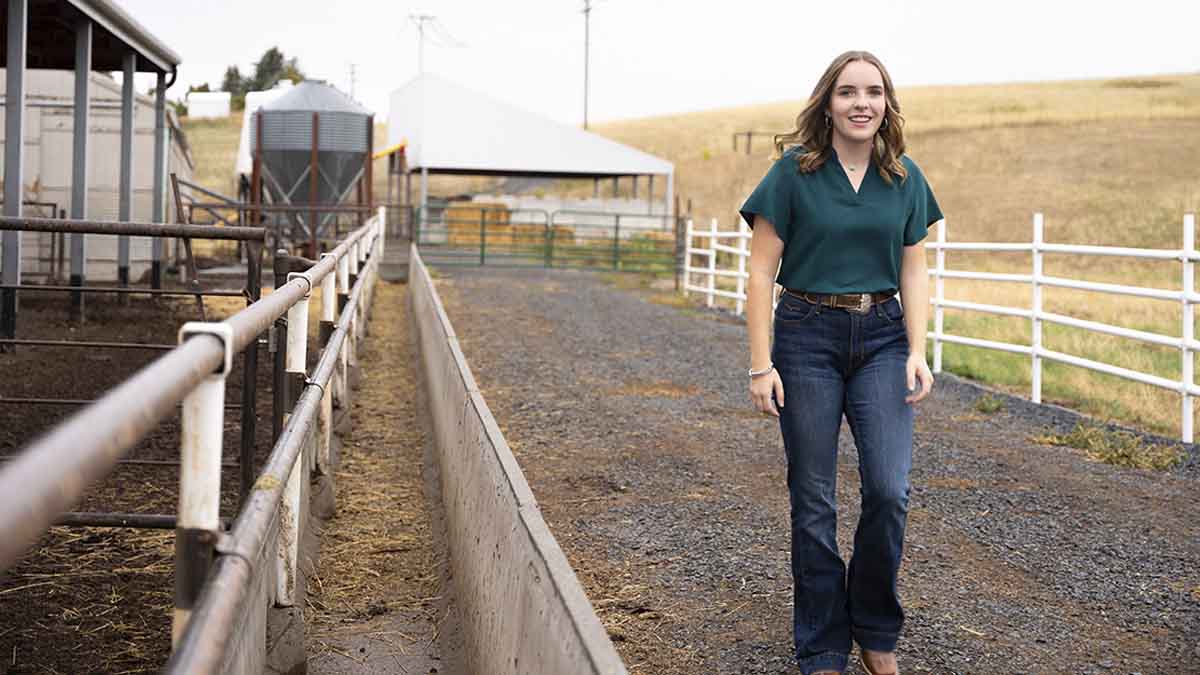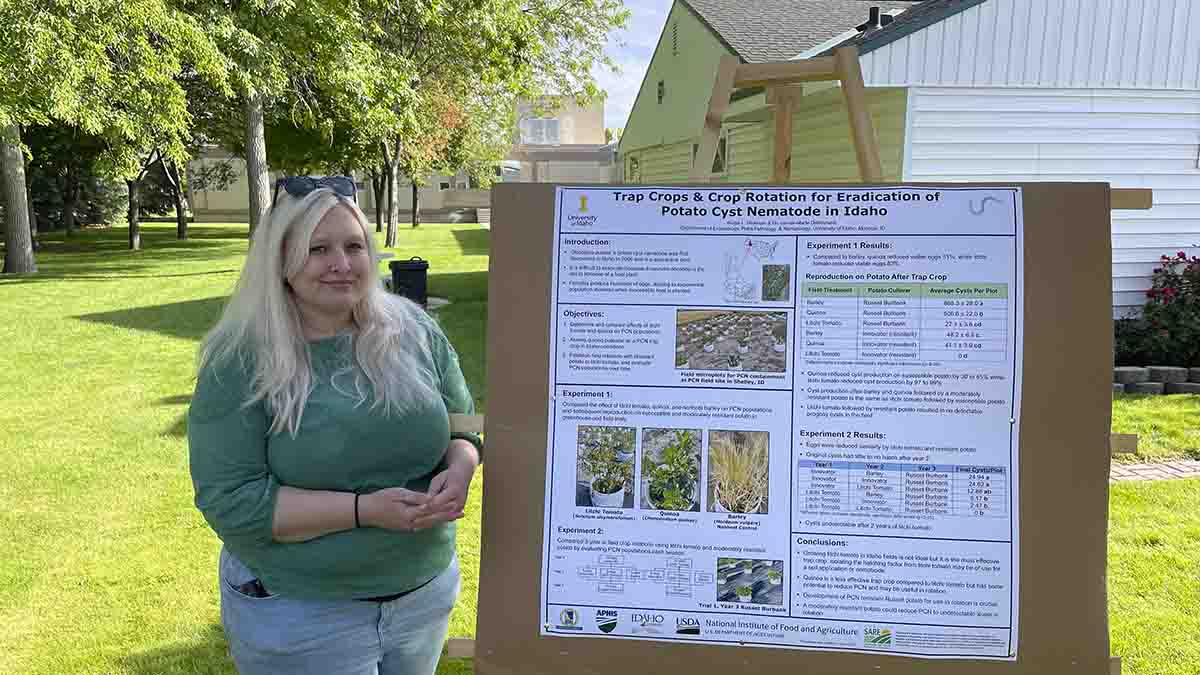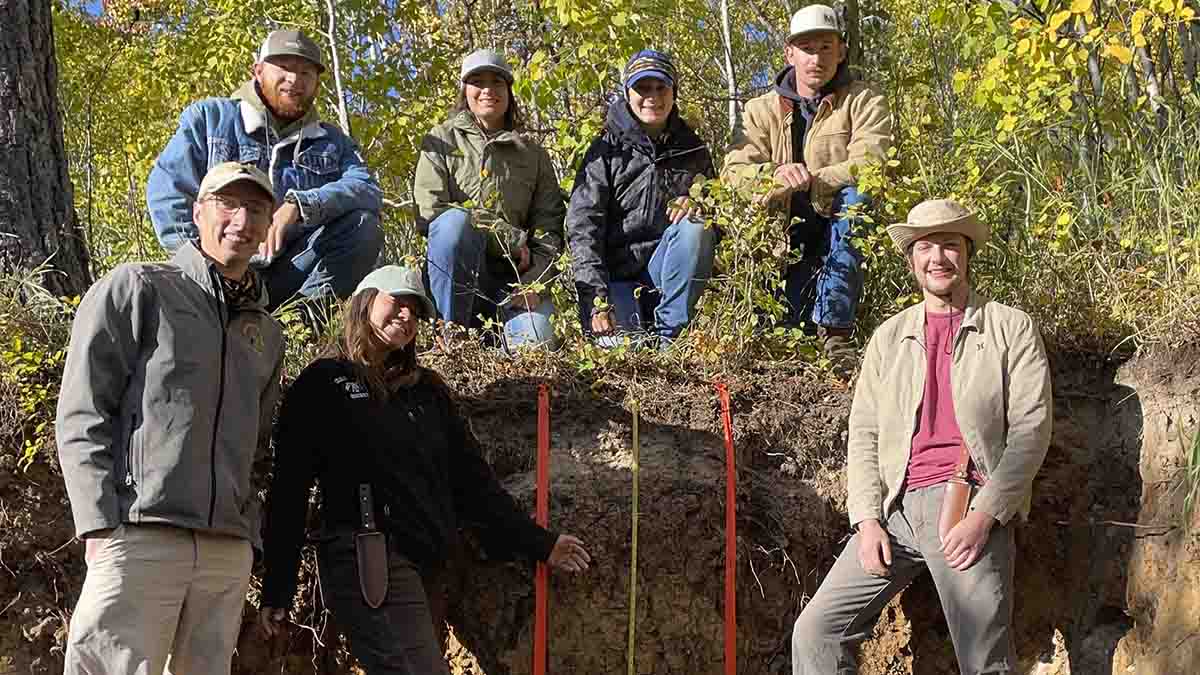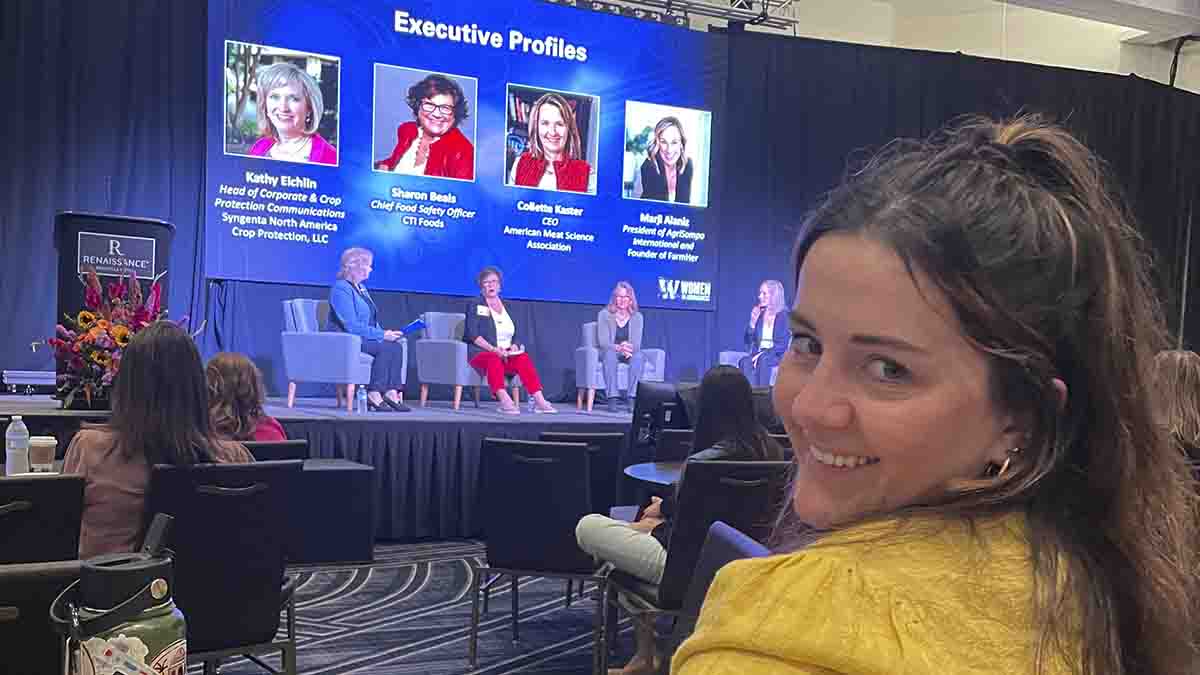Catching Up with CALS — Oct. 18, 2023
Dean's Message — Breaking Ground
Idaho’s beef industry has significantly bolstered its capacity to locally process livestock in recent years, reducing transportation costs that cut into producers’ profit margins. Intermountain Packing began processing beef and bison at a new 66,000-square-foot facility in Idaho Falls in 2022. Agri Beef, working in partnership with regional cattle ranchers, opened the True West Beef plant in Jerome in the summer of 2022. CS Beef Packers, LLC began operations at a new beef plant in Kuna in the spring of 2017. These large, state-of-the-art packing plants represent critical infrastructure in a state that’s home to more cattle than people, with a herd of 2.5 million, including calves and dairy cows that are eventually processed for beef.
On Oct. 14, the state’s livestock industry got more good news when University of Idaho celebrated the ceremonial groundbreaking of a cutting-edge meat processing plant that will offer research and hands-on training in meat science — supplying an expert workforce and continuing education opportunities to run these new packing plants. The forthcoming 12,750-square-foot Meat Science and Innovation Center Honoring Ron Richard will also be home to Vandal Brand Meats, which employs students and generates more than $325,000 in annual sales. Those funds all go toward student support and facility operations, and we expect revenue to increase with a larger retail section in the new meat science center. We also anticipate great demand for Vandal Brand Meats among tailgaters on game days.
The late Ron Richard was a longtime manager of Vandal Brand Meats who helped build the brand’s outstanding reputation. Construction of the estimated $14.1 million center honoring him will commence shortly after the groundbreaking and is scheduled for completion by the fall of 2025. The future center will enable CALS to expand upon teaching programs, research, Extension in the form of public outreach and workforce development opportunities. It replaces a facility that was built in the 1960s and should dramatically improve efficiency, with dedicated space for Meat Science Lab Manager James Nasados and his staff to complete a host of different functions simultaneously. For example, health regulations require workers at our current facility to conduct a complete washdown after working with raw meat prior to processing pre-cooked “ready-to-eat” products, such as the Vandal dogs served at the P1FCU Kibbie Dome. As Phil Bass, an associate professor of meat science, observed of our current meat science facility, “It was very progressive in the 1960s. There are two left-handed desks in there! But it’s time to modernize and show how much more advanced we’ve become.”
The new center will continue filling a niche as one of the few USDA-inspected plants where small-scale northern Idaho ranchers can process their beef. The vice president of meat operations for WinCo Foods, Ellie Willoughby, is eager for the new center to open as it will allow the company to expand upon meat-cutting workshops provided to its employees annually since 2015. For our meat science faculty, including Bass and Associate Professor Michael Colle, the new center will open new research opportunities. Some of our past meat science research explored how molds and microbial communities unique to different locations throughout the world can impart a flavor “fingerprint” akin to terroir in wine when meat is dry aged. The new facility will include multiple freezers with the ability to alter climatic conditions to further explore this flavor diversity. Furthermore, access to multiple coolers with varying conditions should help researchers conduct future studies on how to accommodate increasingly large beef carcasses. Of course, the new facility will help attract students and faculty seeking to innovate in the growing field of meat science.
Our college and university have benefited from incredible stakeholder support, including investments by the cattle industry and the State of Idaho through the Permanent Building Fund. Last year, U of I received a $9 million lump sum from the Permanent Building Fund, allocating $3 million toward the center. The university has requested $2 million in additional revenue from the Permanent Building Fund this year, and the center will be the university’s top funding priority for state dollars moving forward. The Idaho Cattle Association has generously committed to matching members’ donations up to $50,000 toward the center. We’ve made remarkable contributions toward one of our state’s most important industries using an outdated facility with insufficient space. With a new, modern abbatoir at our disposal, we’re bound to earn broad recognition as the region’s premier meat science programs, and one of the top programs nationally.

Michael P. Parrella
Dean
College of Agricultural and Life Sciences
By the Numbers
The University of Idaho Soil Judging Team placed first among 10 teams competing in the joint regional competition hosted by South Dakota State University Oct. 1-6. 6 team members competed. While just 2 points separated the 2nd and 3rd place teams, U of I cleared both of them by 100 points, scoring 2,377 points. For 2 years in a row, member Tegan Macy finished in 1st place in the Northwest for individual soil judging. The recent competition marked only the 4th soil judging contest in which U of I has competed since re-establishing the team in 2022.
Our Stories

From Networking Night to Internship
Hadley Beechinor was planning to spend the summer between her freshman and sophomore year at the University of Idaho working on her family farm in Walla Walla, Washington. A conversation with representatives from Beef Northwest during an employer networking night held by the U of I College of Agricultural and Life Sciences changed those plans.
Beechinor, a sophomore double majoring in agricultural economics: agribusiness emphasis and animal and veterinary science: business option, attended the networking night in fall 2022 to start making connections, but did not expect it to lead to an internship.

Capital for a Day
A display board of cattle brands hanging at the University of Idaho’s Nancy M. Cummings Research, Extension and Education Center caught Gov. Brad Little’s eye while he was visiting the facility on Sept. 28.
U of I offered the center as the venue for Little’s Capital for a Day program when the small community of Carmen, a town of 600 located in Lemhi County near Salmon, was selected for the honor. Capital for a Day brings the governor and his cabinet to a different rural Idaho town each month, enabling residents to directly discuss issues of concern with state leaders.
After a brief scan of the board, Little, who was raised on an Emmett ranch, pointed out his own cattle brand. Then he pinpointed the brand used by his brother, Jim.
The 1,044-acre ranch was donated to U of I in 2001 by the Auen Foundation of Palm Desert, California, in recognition of the late Nancy M. Cummings to serve as the university’s primary cow-calf and forage research station. The “brand board” recognizes the contributions of the Idaho ranchers who collectively donated 110 heifers when the Idaho Cattle Association hosted a “cattle drive” from 2001 to 2002 to help build the facility’s herd.
In January of 2020, the center opened a new headquarters. Hosting Capital for a Day provided the perfect opportunity for the center to showcase its newest facility. Little, who took a private tour of the center during his visit, said it was one of the best venues to ever host Capital for a Day.
“I was very impressed with the Nancy M. Cummings Research, Extension and Education Center during our Capital for a Day event. I greatly enjoyed learning about student and faculty research while touring the ranch,” Little said. “It is clear that the work of the center and the staff are well respected by the Carmen and Salmon communities. Their extensive work in animal science research is essential to continuing Idaho’s agriculture industry and encouraging future generations of cattle ranchers.”
The event drew a steady flow of visitors, many of whom were seeing the center for the first time. Community members asked Little and his cabinet several questions about issues affecting agriculture, including salmon recovery efforts, the state’s wolf management plan, the recent discovery of invasive quagga mussels in the Snake River and Little’s opposition to proposals to remove certain Snake River dams. Education was another major topic of discussion, following the recent announcement of Idaho Launch, which is a program offering high school graduates funds to help them continue their education.

Controlling Quarantined Pest with Quinoa
University of Idaho researchers have found planting a niche “superfood” could provide a profitable rotation crop for potato farmers in eastern Idaho who are dealing with an infestation of the devastating, quarantined pale cyst nematode (PCN).
Eastern Idaho has emerged as the nation’s top quinoa producing area, with roughly 3,000 acres of this nutrient-dense crop planted in 2023.
Quinoa, a flowering plant in the amaranth family, works as a “trap crop” by stimulating PCN to hatch in the absence of a viable host. PCN is extremely hard to eliminate from fields. Encysted eggs can remain viable in soil for more than 30 years before hatching when a host plant, such as potato, is planted.
The PCN infestation found in Idaho was discovered in 2006 and, fortunately, has not spread to other potato producing areas in the U.S. but remains contained to approximately 3,500 acres in Bonneville and Bingham counties.
PCN can reduce potato yield by 80% or more depending on the level of infestation. Because of its tremendous economic impact, and the ease in which PCN is spread in infested soil, infested cropland continues to be regulated by USDA’s Animal and Plant Health Inspection Service (APHIS), where it is regularly fumigated and sampled to determine the viability of the PCN population while it is undergoing a deregulation process prior to planting potatoes again.
Louise-Marie Dandurand, a research professor in the Department of Entomology, Plant Pathology and Nematology, and her doctoral student, Paige Hickman, have studied quinoa in potato rotations in their quest to find new, sustainable options for controlling PCN.
Dandurand and Hickman found quinoa reduced viable PCN eggs by 35% to 40% compared with barley. Barley is used as a controlled check in their research because it neither stimulates PCN eggs to hatch nor serves as a host for PCN. When potatoes were planted after a quinoa crop, cyst production was reduced by 38% compared with cyst production in potatoes planted after barley.
Dandurand’s lab has also researched using a plant in the nightshade family, known as litchi tomato, as another trap crop. Litchi tomato has proven to be far more effective against PCN than quinoa, reducing viable eggs by 97% to 99%. However, litchi tomato is thorny and has no harvest value, and precautions must be taken when planting it to prevent its possible escape as a weed.
“I think quinoa would be worth considering, for sure, as it does help reduce PCN populations. However not as much as litchi tomato, but quinoa is a marketable crop, whereas the primary benefit of litchi tomato is to effectively reduce PCN,” said Hickman, who has researched the use of quinoa and litchi tomato as a PCN trap crop for the past four years.
Dandurand opted to study quinoa based on a publication from South America that found certain quinoa varieties induce hatch of PCN. Many PCN eggs don’t hatch when exposed to quinoa, however, and can remain viable until they have access to a suitable host, such as potatoes.
Dandurand believes certain compounds in litchi tomato also kill the PCN eggs that don’t hatch. She has another doctoral student assigned to isolating those compounds in litchi tomato. The compounds could be applied directly to fields for PCN control.
“You won’t get PCN reproduction with quinoa but as far as reducing PCN, if you use it in rotation with potatoes you’ll get some reproduction in potatoes,” Dandurand said. “I think quinoa has potential as a rotation crop, but it probably won’t be as effective to reduce PCN as a fumigant.”
The researchers conducted their trials in an infested field within the quarantine area, taking special precautions to avoid introducing additional PCN. The cysts were confined to buckets, known as microplots, which were buried in the field. They planted quinoa, barley or litchi tomato in microplot trials then transported their soil samples to an APHIS-approved greenhouse in Moscow, where they planted potatoes in them to measure the effects of the different trap crops on PCN survival and reproduction.
In some of the microplot trials, they planted a PCN-resistant potato variety, Innovator. They found no viable encysted eggs in plots in which Innovator was planted following litchi tomato. PCN counts were similar whether plots were planted with barley or quinoa prior to Innovator.
Dandurand plans to conduct future research evaluating how several different quinoa varieties affect PCN hatching. She also would like to study using quinoa in combination with a fumigant.
Thus far, the researchers have evaluated Kailey, a white-kernelled quinoa variety used by Teton Mills, of Idaho Falls.
Wyatt Penfold, a Driggs seed potato farmer and owner of Teton Mills, said growers who raise quinoa can expect returns that are better than barley but less than potatoes, and their yields tend to increase as they gain more experience with raising quinoa. Penfold has been encouraged by the preliminary U of I research findings.
“Quinoa gives farmers an actual crop they can grow and get paid for rather than litchi tomato,” Penfold said. “It would give us more people to grow it, plus it also helps that economy right around Shelley.”
Faces and Places
The University of Idaho Soil Judging Team placed first at the joint regional competition hosted by South Dakota State University Oct. 1-6. The contest included the seven teams from the Great Plains region and the three teams from the Northwest region, which includes U of I. U of I will now advance to the annual spring national contest. Soil judging requires students to technically describe, classify and interpret soil profiles according to U.S. Department of Agriculture Natural Resources Conservation Service standards. Vandals accounted for three of the Northwest’s top five individuals and two of the top individuals overall. Tegan Macy, a sophomore crop science major from Culver, Oregon, was the Northwest’s individual regional champion for the second consecutive year. Jacob Flick, a junior mechanical engineering major from Gooding, finished second, and Ellie McKnight, a senior environmental science major from Donnelly, finished in fourth place. Also judging were Sky Reinhardt and Tobee Holman, both sophomores from Bonners Ferry majoring in agricultural systems management, and Daniel Brereton, a senior finance major from Lewiston. The team is coached by Paul Tietz, a soil and land resources doctoral student, and is advised by Robert Heinse, acting head of the Department of Soil and Water Systems.
Juliet Marshall, a professor of plant pathology and head of the Department of Plant Sciences, staffed a CALS booth during a college and career fair hosted as part of the Hispanic Youth Leadership Summit, organized by the Idaho Commission on Hispanic Affairs for Native American and Hispanic seventh- through 12th-graders. The event was hosted Oct. 4 at the Idaho State University Pond Student Union Building in Pocatello. Organizers said more than 800 students registered to participate in the event, and Marshall interacted with a steady flow of students, who stopped by to take home Vandal swag and learn about CALS programs. “It’s been interesting to see the number of people interested in the family and consumer sciences. When I say ‘fashion’ their ears perk up because a lot of them say, ‘Really? Fashion design in the College of Ag?’” Marshall said. “People aren’t really aware of the diversity of careers associated with our college.”
Mike Knutz, an area Extension 4-H educator based in Twin Falls, organized the 4-H Learn, Engage, Act and Develop Summit (LEADS), which was hosted Oct. 6-8 for 4-H youth in grades eight through 12th at the YMCA Camp at Horsethief Reservoir in Cascade. Matt Fisher and Robin Baumgartner offered their AgRobotics program, featuring Lego robots as an activity. The new program emphasizes leadership development and provides learning and teaching opportunities for teens in the areas of agricultural sciences, STEM, health and wellbeing and expressive arts.
CALS student Oliva Redmond, a senior from Boise studying crop management, recently attended the 12th Annual Women in Agribusiness Summit in Nashville, Tennessee. The summit includes information on latest trends, outlooks and innovations in agriculture and networking opportunities. Redmond received a sponsorship from Wilbur-Ellis to attend the event.
Animal and veterinary science students Sarah Skinner, Jackalyn Ferguson, Katlyn Scarrow, Emily Meredith and Alicia Easterday recently attended the World Dairy Expo in Madison, Wisconsin. The annual event is the world’s largest dairy-focused trade show showcasing dairy cattle and the newest technologies available to the dairy industry.




Events
- Oct. 18 — Heritage Orchard Conference, Sandpoint Organic Agriculture Center
- Oct. 21 — Public apple tasting, Sandpoint Organic Agriculture Center
- Nov. 1 — Power of Possibility Talks, Bruce M. Pitman Center and U of I Live
- Nov. 3 — Selkirk-Pend Oreille Food Summit, Sandpoint Organic Agriculture Center
- Nov. 28, Dec. 5, 12, 19 — Introduction to Quickbooks for Farming and Ranching class, Online
- Nov. 29, Dec. 6, 13, 20 — Farm Financial Analysis class, Online













